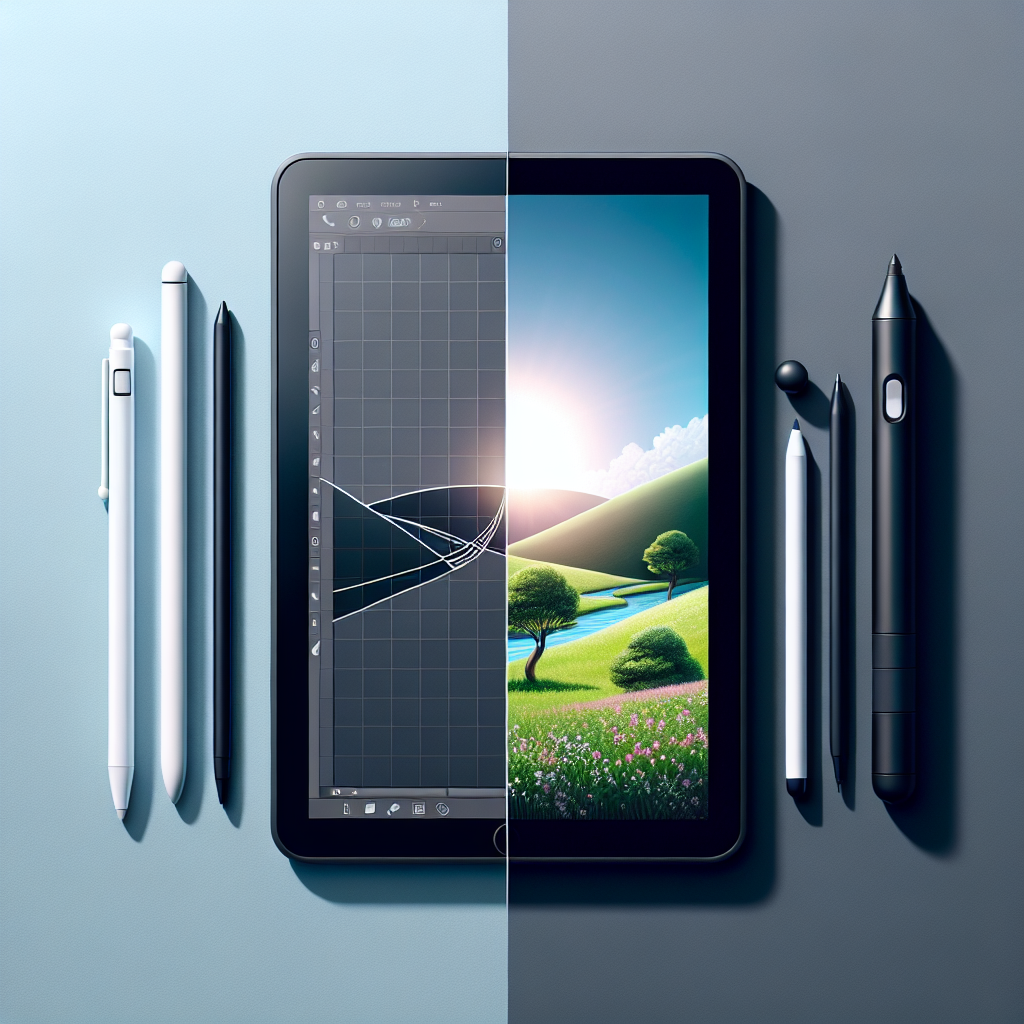Introduction to Apple Pencil and Wacom
When it comes to digital drawing tools, the Apple Pencil and Wacom tablets stand out as top contenders. Both have revolutionized the way artists and designers create, offering unique features and advantages. But which one is the better choice for you? This article compares the Apple Pencil and Wacom on various factors to help you make an informed decision.
Design and Build Quality
Apple Pencil
The Apple Pencil is sleek, lightweight, and feels much like a traditional pencil. It is designed to work seamlessly with iPads, particularly the iPad Pro series. The build quality is exceptional, with a smooth finish that makes it comfortable to hold for long drawing sessions. Its magnetic attachment and wireless charging feature add to its convenience and portability.
Wacom
Wacom offers a range of tablets and styluses, from the beginner-friendly Wacom Intuos to the professional-grade Wacom Cintiq. Wacom’s build quality is robust, aimed at withstanding rigorous use. The styluses are ergonomically designed, often with customizable buttons for added functionality. Some models like the Wacom Cintiq even offer a built-in screen, allowing for direct on-screen drawing.
Performance
Apple Pencil
The Apple Pencil excels in terms of precision and responsiveness. Its pressure sensitivity and tilt functions allow for varied line work and shading, closely mimicking traditional drawing tools. The low latency ensures that there is virtually no lag between the movement of the Pencil and what appears on the iPad screen.
Wacom
Wacom tablets are known for their exceptional pen performance. The Pro Pen 2, for instance, offers 8192 levels of pressure sensitivity and supports tilt recognition. Wacom’s technology provides highly accurate and responsive feedback, making it a favorite among professional artists. The customizable buttons also enhance workflow efficiency, allowing for quick access to different functions.
Software and Compatibility
Apple Pencil
The Apple Pencil is designed exclusively for Apple products, particularly the iPad. It works seamlessly with a wide range of iOS drawing and design apps like Procreate, Adobe Fresco, and Affinity Designer. The integration is smooth, but you’re limited to Apple’s ecosystem.
Wacom
Wacom tablets are compatible with both Windows and macOS, offering greater flexibility. They work with a broad range of professional software such as Adobe Creative Suite, Corel Painter, and ZBrush. The tablets often come with bundled software, providing additional tools and features to enhance your digital art experience.
Price
Apple Pencil
The Apple Pencil comes in two versions: the original and the second-generation models, priced at around $99 and $129 respectively. The cost of the iPad itself, however, is a significant additional expense, making it a more expensive option overall.
Wacom
Wacom tablets vary widely in price, ranging from around $80 for entry-level models to over $3000 for high-end professional devices like the Wacom Cintiq Pro. This range allows you to choose a model that fits your budget and specific needs.
Portability
Apple Pencil
One of the key advantages of the Apple Pencil is its portability. Paired with an iPad, it becomes an all-in-one solution that you can easily carry around. The wireless charging and magnetic attachment reduce the need for extra cables and accessories, making it highly convenient for artists on the go.
Wacom
Wacom tablets, especially the larger models like the Cintiq, are less portable. They typically require a computer connection, multiple cables, and a power source, which can be cumbersome for travel. However, smaller models like the Wacom Intuos are more portable and easier to set up.
Conclusion
Both the Apple Pencil and Wacom offer exceptional features tailored to different types of artists. If you are deeply integrated into the Apple ecosystem and prioritize portability, the Apple Pencil is an excellent choice. On the other hand, if you seek extensive customization, superior pen performance, and software compatibility across multiple platforms, Wacom tablets provide a more versatile solution. Ultimately, the best tool for you will depend on your specific needs, workflow, and budget.

